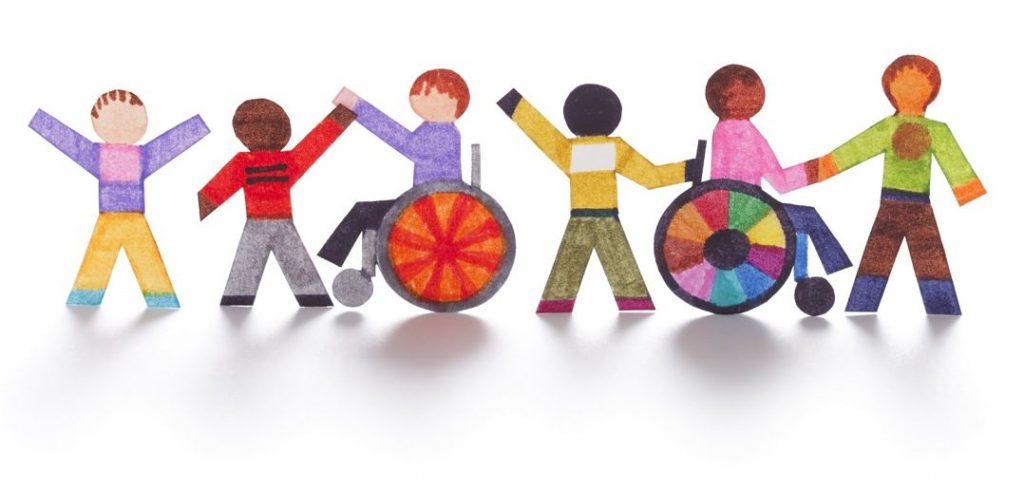Children with disabilities are 10 times more likely to miss out on school than other children. Although some still attend school, they often drop out early due to the challenges they face in accessing education.
The support given to children with disabilities to access education and learning in urban areas is higher than that of their peers in rural areas. Often, they are unable to attend school because of inaccessible classrooms and toilets, limited understanding of their educational needs, prejudice, and unfavorable customs, among other reasons.
Across the globe, between 93 million and 150 million children live with disabilities. The World Health Organization and the World Bank estimate that in some countries “being disabled doubles the chance of never enrolling in school”.
On average, 1 in 3 out of school children have a disability. In Africa, less than 10 percent of children with a disability are enrolled in primary education. In some countries, only 13 percent receive any form of education.
These statistics were further worsened by the Covid-19 pandemic. It deepened the learning crisis through massive school closures and a subsequent economic recession. Up to 180 countries experienced temporary school closures, affecting 1.5 billion young people which is equivalent to 94 percent of the student population worldwide.
Schools remained closed for more than seven months. Governments tried to respond to these unprecedented times by employing remote learning initiatives using both digital and non-digital formats.
However, inadequate infrastructure or the absence of trained teachers who could quickly transition to online models of teaching often limited the effectiveness of such responses. To learners with special needs, this further discriminated them.
Overall, this led to learning loss, a drop in enrollment, and unprecedented dropping out of school. A recent study done by Usawa Agenda, a not-for-profit organization championing equitable and quality education among children in Kenya, showed that children with disabilities bear the most brunt in educational needs.
The findings of the 2021 Uwezo Assessment Report, which assessed 38,537 children from 1,775 primary schools spread across the country, indicated that the enrollment of girls with disabilities recorded the highest decline (16.2 percent) compared to boys with disabilities (13.1 percent).
The report also noted that girls with learning difficulties are the most likely among children with disabilities to be in school whereas those with speech impairment are the least likely to be in school.
On the same factor of schooling status of children with disabilities by gender and disability type, Usawa Agenda found out that boys with mental disability are the most likely to never enroll in school.
On the other hand, girls with albinism are the most likely to drop out of school once enrolled, while boys with albinism are the least likely to drop out of school. All these factors present a grim picture and learning inequities among children with disabilities across Kenya.
Evidence from global studies also show that in developing countries, people with disabilities are more exposed to poverty, than abled population. Missing out on education not only affects the quality of life for individuals and their families, but it also has a negative impact on the economy.
A study by the International Labor Organization found that countries lose between 3 percent and 7 percent of Gross Domestic Product by excluding people with disabilities from the job market. Access to education can help people with disabilities get increased access to employment, health, and other services, and develop a better awareness of their rights. But this cannot be achieved without proper support and willing stakeholders.
The challenges are many, and they include accessibility, inadequate teacher training and support, inflexible adapted curriculum and materials, inaccurate data on people living with disabilities, poor policies and plans, and cultural barriers.
Accessible education to special needs learners can therefore provide a pathway and opportunity for special needs children to deal with trauma and psychological issues and showcase their potential and skills. This will provide them with a secure environment and protecting them from abuse and exploitation.
The United Nations Sustainable Development Goals explicitly offer recommendations that can be adopted. On ensuring children with disabilities access schooling, the UN is set to achieve the following by 2030:
- Equal access to education and vocational training
- Building or upgrading education facilities to make them inclusive learning environments
- Safe, accessible transport systems for all
The commitment to provide inclusive education to all children with disabilities may not come easy, regardless. Most of the strategies that need to be adopted require system-wide and structural changes to reduce and remove the barriers – but they are entirely doable.
When people with disabilities get a quality education, they are enabled to take up key positions in their communities, challenging stigmas and changing negative attitudes about their abilities.
Therefore, the time to take action is now!
